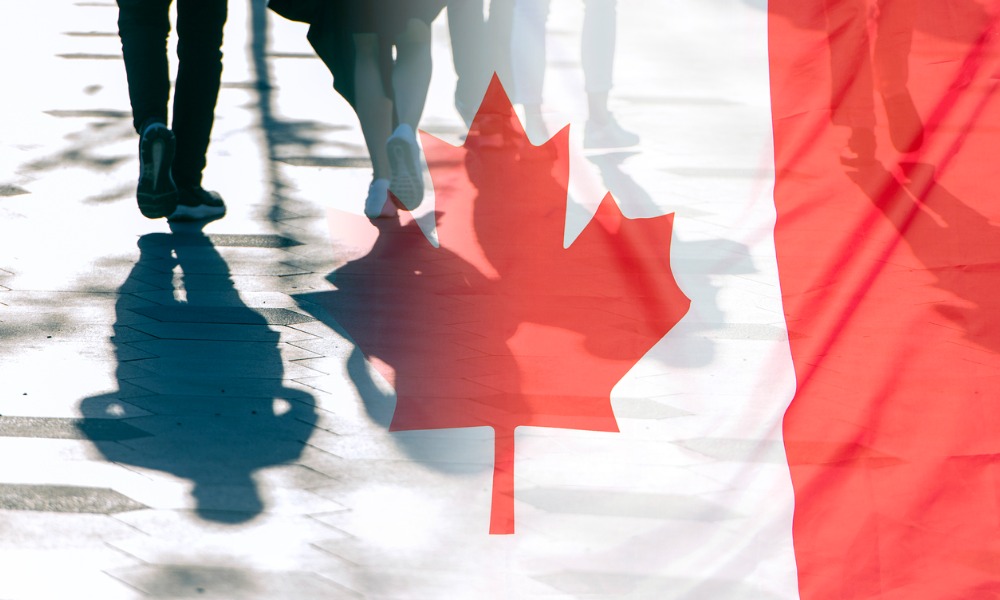
'It's just a huge opportunity'

Canada has launched two new streams in Immigration, Refugees and Citizenship Canada’s (IRCC) Economic Mobility Pathways Pilot (EMPP), which brings in refugees and other displaced people through economic immigration rather than refugee resettlement.
On June 13, IRCC announced the launch of the EMPP Federal Skills Job Offer Stream and the EMPP Federal Skills Without a Job Offer Stream.
“It's just a huge opportunity,” says Veronica Wilson, an immigration lawyer and co-founder and legal director at TalentLift Canada, which is a non-profit recruitment agency helping employers hire from within refugee and displaced populations. “They just have so much to contribute if given the opportunity to use their skills and showcase their talent.”
Canadian employers are faced with unmet labour demand and skill shortages, she says. “There's just this incredible talent within these populations around the world, and they were never able to access skilled visas before. It's like this untapped talent pool.”
The EMPP is among the programs IRCC uses to address persistent labour shortages, said Minister of Immigration, Refugees and Citizenship Sean Fraser. In its announcement, the IRCC said that the expansion of the EMPP allows Canada to fulfill its role as chair of the Global Taskforce on Labour Mobility and makes the Canadian immigration system more responsive to the needs of Canada’s economic and humanitarian commitments.
IRCC introduced phase one of the EMPP in 2018. In phase one, the applicant needed a job offer and could apply to any permanent residence pathway. Wilson and Dana Wagner launched TalentLift in 2021 to help employers hire from phase two, which allowed candidates to apply through provincial nominee programs such as the Atlantic Immigration Program, the Provincial Nominee Program, or the Rural and Northern Immigration Pilot. Being exclusive to “select permanent residence pathways,” the scope and scale of the pilot were limited, says Wilson, and she and her partners advocated for a “simpler, faster and more flexible pathway for displaced and refugee applicants.”
The federal EMPP provides an additional route that does not replace phase two, which is now known as the Regional EMPP, and includes job offers under any National Occupation Classification category, she says.
“It really is a game changer,” says Wilson. “And it's a more inclusive and equitable immigration system now. The impact is going to be pretty big. We're really excited to see where this goes.”
She says TalentLift has a database of candidates that they have collected with the help of partners from countries around the world and are looking for employers with skill shortages. She sees gaps in sectors such as healthcare, hospitality, food services, IT, and skilled trades.
Candidates who come to Canada as part of the EMPP will arrive as a permanent resident. Before the EMPP, refugees and displaced people were unable to access economic immigration because they would first have to come to Canada temporarily on a work permit before having a pathway to permanent residence, says Wilson. This was untenable because candidates must show temporary intent and the ability to leave to get a work permit, which a refugee or displaced person cannot demonstrate.
According to the United Nations Refugee Agency, at the end of 2022, there were 108.4 million forcibly displaced people worldwide, 52 percent of whom come from Syria, Ukraine, and Afghanistan.
“That's a huge talent pool that Canadian employers can now access,” says Wilson. She says these people are currently stuck in host countries, and their skills and talents are going to waste.
“One of our candidates worked as a nurse, and he worked with children in children's hospital... He was living displaced in Turkey, and he was just working in a plastics factory and stocking shelves in a supermarket. At the same time, there's a shortage of healthcare workers in Canada.”
The EMPP now opens up that option for these people to rebuild their careers,” says Wilson. “It's a win-win – win for employers and also for the communities because they are looking for a new home, to rebuild their lives, and restart their careers.”
IRRC said Canada remains a global leader in “refugee resettlement and labour mobility,” with 46,500 refugees from more than 80 countries resettled in 2022.